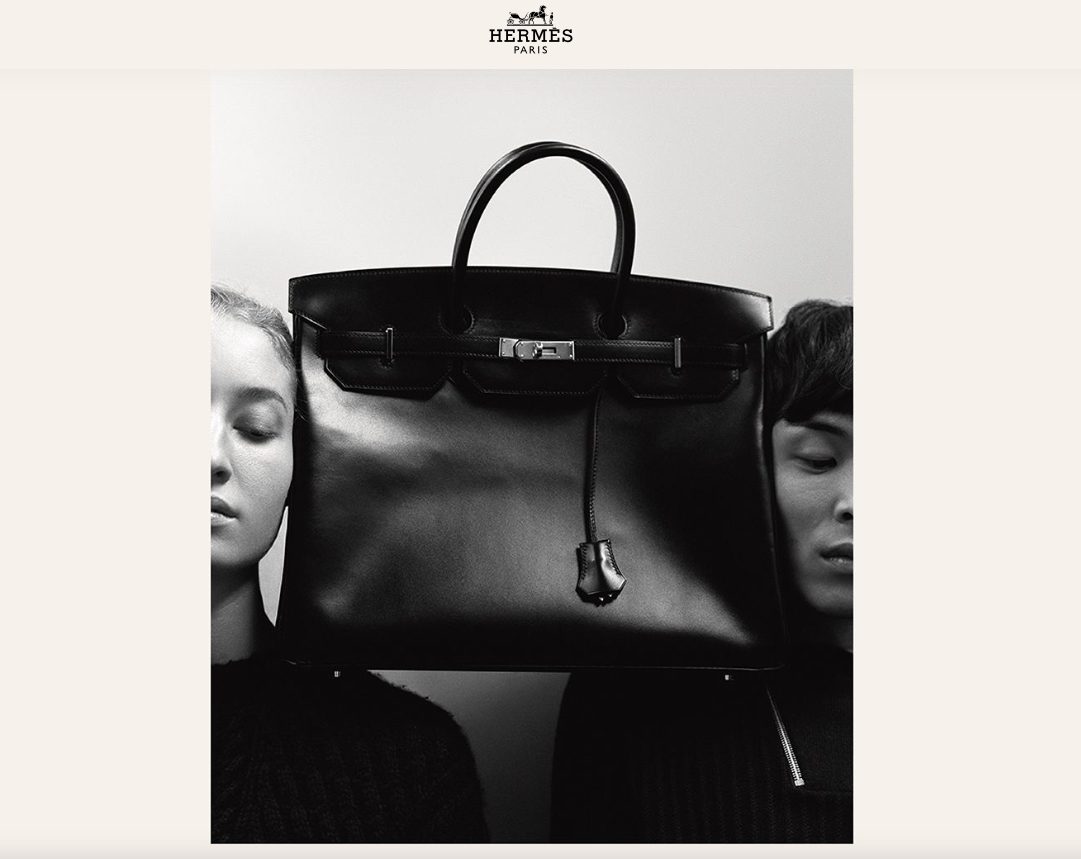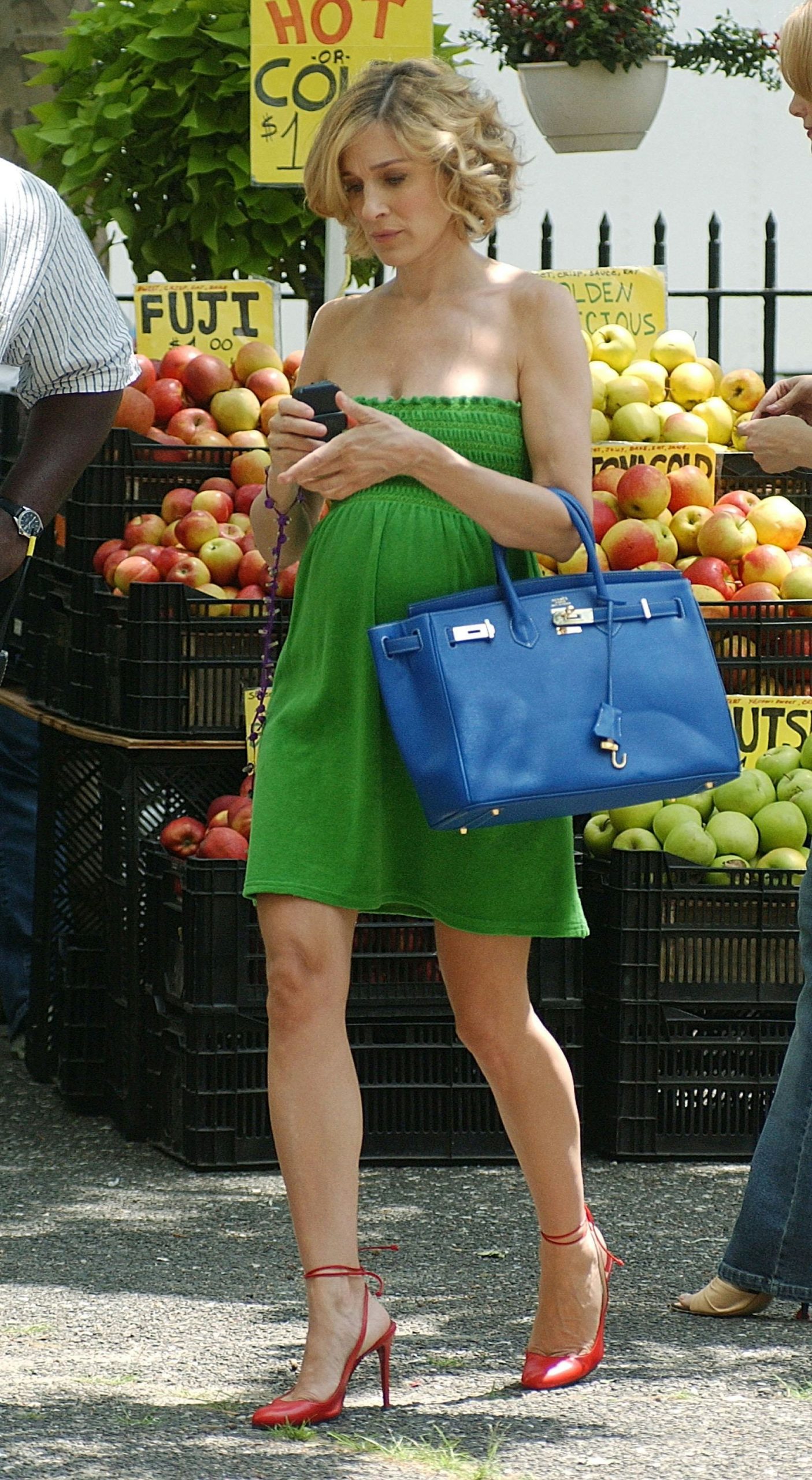Jane Birkin (1946-2023) is recognised in fashion history as the muse of the world’s most desired Hermes handbag, The Birkin. A British-French actress, singer, and director, she is still known for Evil Under the Sun (1982), Blow-Up (1966) and Death on the Nile (1978). Find out more about Jane and her Birkin legacy.

Jane Birkin
Remember when Samantha expresses what In August 2001, an episode of Sex and the City showcased Samantha Jones talking about her Birkin: “It’s not a bag; it’s a Birkin!”? And, in honour of Jane Birkin’s legacy, Instagram account @janebirkindaily uploads photographs and videos depicting the Birkin lifestyle. As demand for the quintessential fashion accessory skyrocketed, people realised that the Hermès Birkin had become an icon and investment piece. But who is the woman behind this bag and why is it named after her?
Jane Birkin: Early Life and Background
Jane Birkin was born on 14 December 1946 in London. Her father, David Birkin, served in the Royal Navy, and her mother, Judy Campbell, was an actress in British theatre. Birkin grew up where theatre, scripts, and performance were part of everyday life and she was exposed to music, acting, and literature from an early age.
Birkin began her artistic journey in the 1960s, first appearing in small theatrical and film roles in the United Kingdom. She gained early recognition when she acted in the film The Knack …and How to Get It (1965), which won the Palme d’Or at Cannes, and later in Blow-Up (1966), directed by Michelangelo Antonioni. Though her roles in these films were limited, they made her a recognisable figure among emerging actors.
Her move to France marked the next stage of her rise. In 1968, she starred in Slogan, where she met the French singer and songwriter Serge Gainsbourg. Their professional and personal partnership drew public attention, especially when they recorded the song “Je t’aime… moi non plus” in 1969. The song became a hit across Europe and catapulted Birkin to fame.
With her flared jeans, mini dresses and distinctive fringe, Birkin became the ultimate It girl in the 1970s. She blazed her own trail after walking out on Gainsbourg in 1980. Birkin worked with leading directors including Bertrand Tavernier, Jean-Luc Godard, Alain Resnais, James Ivory and Agnes Varda. But she remained forever associated with Gainsbourg, who continued to write songs for her after their break-up.
The Birkin: An Accidental Icon
In 1983, Jane Birkin happened to be seated with Jean-Louis Dumas, the Chief Executive of Hermès on an Air France flight. As the story goes, the contents of her handbag spilled onto the floor, prompting a casual conversation between the two. Birkin mentioned that she had never been able to find a leather bag with enough space and compartments to suit her active everyday life and travel requirements. She expressed her desire for something elegant that was large enough to carry personal items for work, travel, and childcare.
Jean-Louis Dumas listened closely and sketched a provisional design during the flight. He asked Birkin what features she would want: soft leather, strong handles, a structured body that wouldn’t collapse, and interior room to organise belongings. Birkin contributed her ideas, describing a bag that combined practicality and luxury without looking too formal. The conversation was casual, yet it laid the foundation for one of the most sought-after handbags in modern fashion history.
Following the flight, Dumas took the concept back to the Hermès workshops. Hermès craftsmen developed the prototype, using the luxury fashion brand’s tradition of saddle stitching and high-quality leatherwork. In 1985, Hermès presented Jane with the prototype, asking for her permission to name the new model in her honour. A year later, the Birkin bag was gifted to Jane Birkin. Its roomy interior and secure lock made it an ideal stylish hold-all during travel and shortly it became a cult product.

Jane Birkin carried it daily for nearly a decade. Her Birkin served as a functional accessory and as a canvas for her activism. Per BoF: ‘Careful not to be cast as overly precious by her association with luxury house Hermès (whose CEO designed the $10,400 bag bearing her name to meet her needs as a young mother), Birkin would toss the bag around like it was nothing until she stopped wearing it due to tendonitis, and decorated it with stickers for humanitarian causes like Medecins Sans Frontieres.’
In August 2001- when an episode of Sex and the City showed Samantha saying, “It’s not a bag — it’s a Birkin!”- demand for the luxury bag skyrocketed. And why not? Per a report by Sotheby’s, the Birkin takes artisans around eighteen hours to handcraft and is marked with a code that identifies its year of creation, the workshop it was crafted in and the artisan who created it.
Over time, the Birkin evolved from a personal collaboration into a global cultural symbol. Its association with Hermès craftsmanship, rarity due to limited production, and strong resale value made it one of the most desired luxury handbags in the world. And, it increases in value.
In July 2025, Sotheby’s sold Jane Birkin’s own Hermès Birkin bag—the original prototype created for her in the 1980s—for a record-breaking $10.1 million at auction in Paris. This historic sale marked the first time in nearly twenty-five years that Jane Birkin’s original Birkin bag was available for purchase, cementing its place as one of the most iconic handbags ever created—and now, the most expensive Birkin ever sold!
Jane Birkin: Activism and Personal Values
In July 2015, Jane Birkin asked the luxury brand to remove her name from the Birkin bags, after People for the Ethical Treatment of Animals (PETA) published a graphic video that showed crocodiles and alligators being bred and killed for their skins, which were then reportedly sold to Hermes-owned tanneries.
In a statement following the investigation, Birkin, who is an animal rights advocate, said in a statement to the media that she had “asked Hermes to rename the Birkin Croco until they adopt better practices that meet international standards for the production of this bag.” Hermès responded by expressing that it was “shocked” by the images and would investigate the farm, while emphasizing that the skins from the specific farm in the video were not used for Birkin bags.
“Hermes respects and shares her (Jane Birkin’s) emotions and was also shocked by the images recently broadcast,” it said in a statement. “Her comments do not in any way influence the friendship and confidence that we have shared for so many years.” The company, which stated it imposed high ethical standards on its suppliers, reached an agreement with Jane Birkin by September 2015 after reassuring her that measures would be taken to ensure the ethical treatment of animals. Birkin dropped her request and the bag continued to carry her name.
Why Hermès Birkin Is A Cult
Per Vogue: “In 2016, a 2008 Birkin made from white Himalaya crocodile with 18-karat white gold and diamond hardware was sold at Christie’s Hong Kong’s 30th anniversary auction for £208,175. The following year, a similar Birkin from 2014 sold for a jaw-dropping £293,000, and in 2022, Sotheby’s sold a Diamond Himalaya Birkin 30 for over $450,000.”
A great deal of Hermès popularity as a brand in the 90s lies in the release of the Birkin, which demonstrated a shift in Hermès’ approach to modern fashion but which broadened the luxury brand’s customer base and made a Hermès bag more accessible, attractive and functional to women. The limited release of each new collection means that every new Hermès Birkin which enters circulation is coveted and high in demand.
The other factor which makes the Hermès Birkin a sought-after classic is the celebrity and A-list following it has nurtured among names like Victoria Beckham, Kim Kardashian West, Jennifer Lopez and Lady Gaga who are often spotted out in rare tones, exotic leathers or bold colours of the Birkin. The bag isn’t just about luxury—it signals that the wearer has “made it,” and the celebrities’ frequent spotting with the Birkin reinforces its exclusivity and cultural impact.

A still from ‘Sex And The City’
Why Jane Birkin’s Influence Endures
Jane Birkin passed away at the age of 76 in Paris, as confirmed by France’s Culture Ministry. She is succeeded by two daughters, Charlotte Gainsbourg and Lou Douillon, who also pursue a career in cinema and music, while her third daughter Kate Barry died in a tragic accident in 2013.
The endurance of Jane Birkin’s influence till date is rooted in the contrast between her personal treatment of the bag and the way the market reveres it. Birkin used her bag casually—stickers promoting her activism and daily items included; it was a practical object rather than a protected trophy. This attitude added another dimension to its cult status: the ideal of effortless luxury, where value stems from how naturally something can integrate into everyday life. In this sense, the Birkin bag does not merely bear her name—it carries her ethos: quiet luxury grounded in practicality.
What makes the Birkin a cult object is its exclusivity and the cultural layers over time. The bag has become a symbol of wealth, aspiration, and fine taste, appearing in film, television, music, and celebrity wardrobes. Unlike luxury items that fluctuate in relevance, the Birkin is current due to its controlled distribution, handcrafted production, and the perception that it is an investment—some models have appreciated in value more reliably than financial assets!

Jasmeen Dugal is Associate Editor at FashionABC, contributing her insights on fashion, technology, and sustainability. She brings with herself more than two decades of editorial experience, working for national newspapers and luxury magazines in India.
Jasmeen Dugal has worked with exchange4media as a senior writer contributing articles on the country’s advertising and marketing movements, and then with Condenast India as Net Editor where she helmed Vogue India’s official website in terms of design, layout and daily content. Besides this, she is also an entrepreneur running her own luxury portal, Explosivefashion, which highlights the latest in luxury fashion and hospitality.











